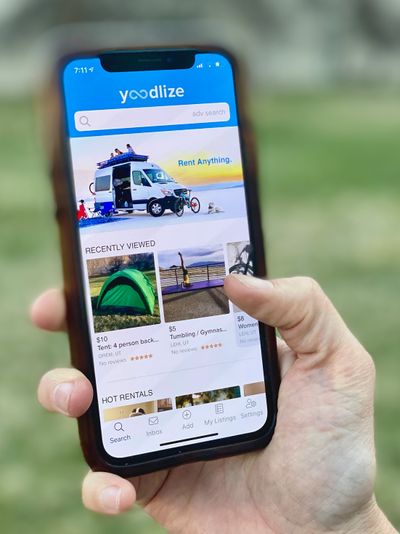By Amy Osmond Cook, VP of Marketing, Simplus, Founder, Osmond Marketing.
This article was originally published in the Spring 2018 edition of Silicon Slopes Magazine.
The US Equal Employment Opportunity Commission (EEOC) received 91,503 charges of workplace discrimination in 2016. That’s troubling, especially when we consider that a lot of workplace discrimination goes unreported.
What can we do about that? We can start by understanding stereotyping, which may lead to discrimination. With that foundation, we can build cultures of transparency, encourage employee interaction, and find commonality through our differences.
Understand Stereotyping
Stereotyping is pervasive everywhere, and certainly in the workplace. In fact, even though we may not be blatantly racist, sexist, or classist, we stereotype without even realizing we’re doing it! And we do it all the time.
Susan Fiske, a psychologist at Princeton University, found that people judge others on two fundamental characteristics: warmth (how positive or negative the person’s intentions are) and competence (how capable the person is of achieving those intentions). Assessments based on these two factors, she says, “determine our sometimes unconscious emotional responses and ultimately our discriminatory behavior toward members of a group.” Fiske’s factors form a quadrant of “four different kinds of prejudice that can be destructive to workplace inclusiveness.”
Here’s an example of how that quadrant could work with an individual’s perception of class:
Warm, competent (Middle class)
Not warm, competent (The very rich)
Warm, not competent (Working poor)
Not warm, not competent (Homeless people)
The quadrant works for class, race, and sex. And it’s easy to see how one’s placement of certain groups in certain quadrants could affect the workplace. For example, let’s say a hiring manager stereotypes Asian applicants as not warm and competent. This stereotype causes her to not to hire Asian applicants for positions that involve human interaction, like HR positions, even if they’re the best candidate. Instead, she hires Asian applicants for positions that don’t involve human interaction, like data entry.
How can you prevent problems like this in your workplace? Whether the problem is favoritism, a lack of mentorship, or resentment, you’re not likely to change years of unconscious stereotyping habits. That’s for each individual to work on. But you can make sure your work discrimination policies are up to snuff and understood by your employees.
You can also create an *environment *that fosters unity — where your employees are more likely to focus on individuals and their strengths rather than on stereotypes and weaknesses. You can do this by being transparent, giving employees opportunities to interact with each other, and creating commonality through differences.
An excellent example of common-ground culture in the workplace can be found at Utah-based tech startup Simplus, where the team of close to 200 individuals around the world all pride themselves in being “underdogs.” The company holds three core values in the spirit of encouraging the best from each individual regardless of their ethnicity, gender, or other labels prone to stereotype. These three values are: Critical thinking (solutions-based problem solving for efficient outcomes), accountability (starting with leadership’s role in providing employees a great work life, and employees’ accountability to each other, stakeholders, and customers), and stewardship (forward-thinking guidance and support for fellow teammates).
“Culture is the number onemetric here at Simplus,” says CEO Ryan Westwood. Simplus welcomes employee feedback and encourages engagement from team members across all positions to improve upon best practices and the company’s overall performance. Weekly meetings open to all staffers provide opportunities for collaboration, open feedback, and collective progress.
As a result, Simplus’s company culture has received national acclaim, ranking No. 2 on Entrepreneur’s 2017 Best Midsize Company Cultures list, making Comparably’s Top 50 Best small-to-midsize companies list, and recently taking No. 12 best regional workplace in USA Today’s 2017 ranking.
Be Transparent
At SumAll, every employee knows what every other employee gets paid. Sound crazy? It turns out it’s actually a great defense against inequality.
“Secrecy might be the easiest response to inequality, but it’s definitely not the right one,” says David Burkus, author of *Under New Management. *“It just takes the issue underneath where no one can see it.”
The federal government is one example of the success of this. In the workforce, women get paid on average 23 percent less than their male counterparts; in the federal government, where everyone knows everyone else’s pay, that gap shrinks to 11 percent.
Some research, Burkus says, has suggested that “women and minority groups are actually drawn to companies or organizations that have a transparent condition because [they’re not] always wondering if they’re being paid unfairly.”
So, transparency about pay actually encourages women and minorities to come to your company! You should also be transparent about the issue of stereotyping itself.
To do so, encourage frank discussions and training about employee diversity and stereotypes. Employees may roll their eyes, but a 2001 study found that students who enrolled in a prejudice and conflict seminar “showed significant reductions in their levels of prejudice (both conscious and unconscious).” The study concludes that “our biases are malleable: Learning about them can give you the self-insight and motivation you need to undertake the journey of change.”
Give Employees Opportunities to Interact with Each Other
Your employees need to get to know each other as human beings, not just as stereotyped coworkers. Provide these opportunities by forming affinity or diversity groups within your company. Mix up work teams and collaborations so employees can meet new people with different backgrounds and perspectives. You can also organize socials or activities apart from work to create bonding through fun. (Bonus: happy workers are 12 percent more productive.)
When you facilitate friendships through groups that have common goals, you help break down the barriers of prejudice and stereotype. “Cross-group friendship is powerful,” says Rodolfo Mendoza-Denton PhD. “So powerful, in fact, that it has even been shown to reduce animosity among Catholics and Protestants in Ireland who have lost loved ones as a result of conflict.”
Create Commonality through Differences
It sounds cheesy, but celebrating differences reduces our tendency to stereotype.
“Research shows that in highlighting everyone’s differences you can create a kind of commonality,” says Michael I. Norton, an associate professor at Harvard Business School. “We are *all *different, and my difference is no more or less valued than yours. Most organizations do not manage diversity in this way, however.”
How can you manage diversity in this way and create this commonality?
Consider having a diversity day that takes an all-inclusive approach, celebrating the heritage of both minority employees and white employees. “Think of having not only black people talking about being African American, but also white people talking about their Irish or Italian heritage, for instance,” Norton suggests.
And this idea works for factors other than race. We should value differences and find strengths in many different parts of life: the frugality of an employee who grew up in a low-income family; the multitasking skills of a woman who’s rejoining the workforce after raising her children; the intelligence of an introverted employee who’s been at the company forever. Even if you simply start by celebrating these differences personally, your attitude and fresh perspective will spill over into your actions and the attitudes of your employees.
By being transparent, giving employees opportunities to interact with each other, and creating commonality through differences, we can create an environment where unity and inclusivity flourish.






